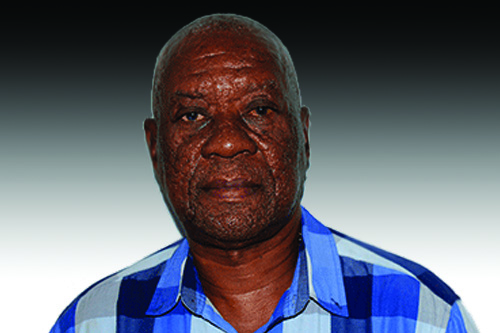Ordinarily, if a normal person is asked to choose between war and peace, they would most likely opt for peace.
So what language does the Zionist state understand?
Looking back at the creation of the state of Israel, one can convincingly argue that peace does not seem to be in the political vocabulary of successive Israeli leaders, least of all Benjamin Netanyahu who should have had his day at the ICC.
We have to understand this war mentality in its broader context.
In 1948, the map of the Middle East had to change to make room for the new state of Israel. It meant taking land from the Palestinians.
Historically, partitions have been violent processes – South Sudan, Eritrea, Pakistan, etc.
In 1948, Israel came into being in a violent process that entailed the ethnic cleansing of Palestine.
The map of the Middle East changed again in 1967 when the Israeli army pre-empted an Arab attack in an effort to occupy the West Bank of the Jordan River and the Gaza Strip.
Last but not least, in 1982 not just the geographic dynamics but world public opinion changed when Israeli troops slammed across the border into Lebanon creating another war front – which pitted Israel against Hezbollah.
World opinion concurred that this time Israel had gone far beyond protecting its ‘borders’ or strategic interests.
It is against this sketchy background that the ongoing Israeli-Palestinian conflict must be understood.
DOUBLE STANDARDS
There is a peace movement in Israel – Peace Now, a non-governmental liberal advocacy and activist group with the aim of promoting a two-state solution to the Israeli-Palestinian conflict.
But this group is working against the tide, so to speak.
Israel’s hardliners don’t seem interested in peace. Various agreements have been reached and peace treaties signed, but none have been implemented, including the more comprehensive Oslo Accord.
That brings us to the current conflict. What happened?
On 7 October, Hamas launched an unprecedented attack in Israel, killing hundreds of people, injuring some, and taking up to 200 people hostage.
For me this was another Intifada – the Palestinian uprising against Israeli occupation of the West Bank and Gaza, but on a higher level.
The attack drew worldwide condemnation and rightly so. But there is also a double standard.
War crimes are committed against Palestinians decade after decade, and the West can’t say a mumbling word.
The US sends billions of dollars in military aid to Israel each year.
I have always said Palestinians fighting the Israeli army know they are also (indirectly) fighting America.
That is American proxy wars against people they label as terrorists.
Thus the outcry and outrage from Palestinians and others sympathetic to the Palestinian cause that countries should stop selling/supplying weapons of mass destruction to Israel – we know they will be used against the very people Israel colonised.
But Israel is not just an occupational force or apartheid state, but a terrorist state.
I hear people talking about Israel being a democratic state. What a lie! Democracies are supposed to respect the democratic rights of others which Israel is not doing in the case of Palestinians.
UNDER SIEGE
As part of its response to Hamas’s horrific attacks, Israel has mobilised more than 300 000 troops to launch a massive ground attack.
It is reported that since 7 October, more than 1 900 Palestinians have been killed, including at least 600 children, more than 7 600 injured, and over 423 000 people displaced.
On 12 October, Israeli forces issued an order for 1,1 million Palestinians in north Gaza to move to the south within 24 hours amid ongoing air strikes.
The next day, Israeli forces reportedly began to enter Gaza to “clear” the area.
Palestinians have no safe zone anywhere in Gaza.
Israel has imposed a “complete siege” on the tiny enclave, with water, food, fuel and electricity unlawfully cut off.
Rafah, the only border crossing that remained partially open to Gaza, was closed after damage caused by Israeli air strikes.
To give you an idea, that is almost half the population of Namibia told to move to Botswana through the unforgiving Kalahari Desert.
GRAVE DANGER
A UN human rights expert has warned that Palestinians are in grave danger of “mass ethnic cleansing” and called on the international community to urgently mediate a ceasefire.
“The situation in the occupied Palestinian territory and Israel has reached fever pitch,” said Francesca Albanese, UN Special Rapporteur on the human rights situation in the Palestinian Territory.
“There is a grave danger that what we are witnessing may be a repeat of the 1948 Nakba (which means “catastrophe” in Arabic and refers to the mass displacement and dispossession of Palestinians), and the 1967 Naksa, yet on a larger scale. The international community must do everything to stop this from happening again,” the UN expert warned.
Albanese said Israeli public officials have openly advocated another Nakba, the term for the events of 1947-1949 when more than 750 000 Palestinians were expelled from their homes and land during the hostilities that led to the establishment of Israel.
The Naksa, which led to Israel’s occupation of the West Bank and Gaza Strip in 1967, displaced 350 000 Palestinians.
NATIONHOOD
Thousands of Palestinian refugees are now scattered around the world, especially in Lebanon and Egypt, where I was also a political refugee in the 1980s, interacting with many Palestinian refugees to hear their stories.
As of now, the Palestinians are a nation without a nation state and a people without statehood. What is the way forward?
End the blockade, end the occupation, respect the ‘green line’, and settle for the ‘two-state’ solution.
In the credo of the Israeli Peace Now movement: “Peace is made with enemies, not friends.”
- Alexactus T Kaure is a freelance writer



Leave a Reply